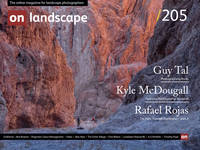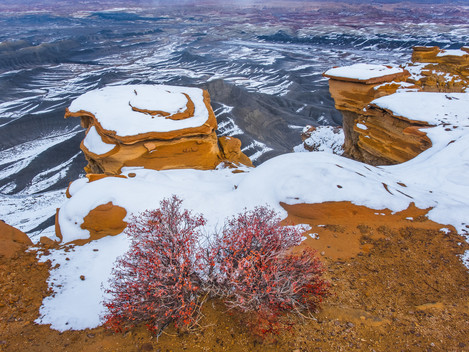Nature and photography in times of social distancing
This article was written in the early days of the COVID-19 pandemic. I wish to make it clear that at the time of writing the places I was photographing were open to local residents under certain "distancing" conditions. We are now under stricter closure orders, regrettably due to too many non-locals ignoring pleas from local communities to stay away (we have very limited medical and emergency services), and I have shifted my efforts to indoor activities for the time being.
Both you and I are incapable of devoting ourselves to contemporary social significances in our work; […] I still believe there is a real social significance in a rock—a more important significance therein than in a line of unemployed. For that opinion I am charged with inhumanity, unawareness—I am dead, through, finished, a social liability, one who will be “liquidated” when the “great day” comes. Let it come.” ~Ansel Adams (in a letter to Edward Weston, 1934)
During the turbulent days of the early 1930s, around the time of the founding of Group f/64 (by, among others, Ansel Adams and Edward Weston), Henri Cartier-Bresson is rumoured to have commented, “The world is going to pieces and people like Adams and Weston are photographing rocks!”
To me, Cartier-Bresson’s comment exemplifies an unfortunate philosophical prejudice that pervades many of our arts, sciences, and other pursuits—the prejudice of humanism—suggesting implicitly that the welfare of the human species and qualities of the so-called “human condition” must always be considered of supreme importance over any other subject. It’s a notion that has never resonated with me, as a person and as an artist. The natural world has enriched my own life more profoundly and in more ways than any human-centric enterprise. Much as I respect the life and work of Cartier-Bresson and so many others whose world views are different than my own; and much as I enjoy the visual poignancy of “decisive moments,” and the skill and genius required to photograph them; photographs of rocks, and the legacies of photographers such as Weston and Adams, have been considerably more important and consequential to me.
Although I respect those who feel otherwise, so much photography amounting to humanity gazing into its own navel, fascinated by its own oddities, superstitions, rituals, shortfalls, and miseries; has never interested me as much as the vast world beyond the vanities and tragedies of our species, and generally less so than all the stories, lessons, and metaphors to be found in rocks, and in photographing rocks. As E.O. Wilson points out, “The main shortcoming of humanistic scholarship is its extreme anthropocentrism. Nothing, it seems matters in the creative arts and critical humanistic analyses except as it can be expressed as a perspective of present-day literate cultures. Everything tends to be weighed by its immediate impact on people. Meaning is drawn from that which is valued exclusively in human terms. The most important consequence is that we are left with very little to compare with the rest of life. The deficit shrinks the ground on which we can understand and judge ourselves.”



